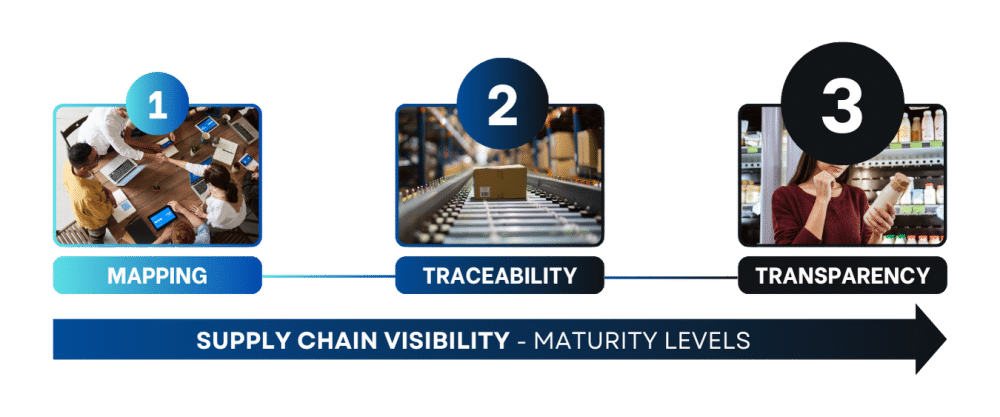Imagine you either scan a QR Code or receive a push notification on your phone from a product you just purchased and based on your own interest and available time, you start navigating through different websites containing information about the raw materials used on the product, how and where these raw materials were sourced from, the path all its components have gone throughout the value chain, an eventual discount coupon for subsequent purchases with the same brand, a warning message in case the product is being recalled for some reason, information about where to dispose the product components after its consumption along with credits in the form of digital tokens to be exchanged somehow (e.g., discounts, cash back, others) in the nearest store, the list of use cases is limitless. Welcome to a world where Supply Chain Visibility is a reality!
The concept is pretty simple, the benefits it brings are invaluable and create solid competitive advantage, but implementing Supply Chain Visibility is challenging and requires a proper understanding of its foundational elements. Let’s then see what they are.

1. Mapping
According to Generative AI, Supply Chain Mapping is the process of documenting and analyzing the flow of materials, information, and money in a supply chain. The goal is to create a detailed map of the supply network, which can be used to improve efficiency, reduce risk, and make informed decisions.

These key operational principles can be explored, documented and assessed in many different ways. Supply Chain Mapping can be connected to: suppliers’ code of conduct and certifications, strategic perspective of suppliers geographic locations and their strengths, understanding of manufacturing capabilities, make vs. buy analysis driving business decisions, external and internal manufacturing volume capacity, inventory storage and logistics’ capabilities, downstream partners’ strengths and opportunities, distribution channels’ capacity to absorb demand and supply, among other relevant business variables.
These business insights all combined are very basic though. A robust and mature Supply Chain Visibility strategy still requires other important building blocks. Let’s keep moving.
2. Traceability
Supply Chain Traceability deals with a deeper granular level, compared to Supply Chain Mapping. It is the ability to track raw materials and finished goods as they move throughout the value chain. It’s an end-to-end perspective, either at batch or sellable unit levels.
Software solutions can register information about raw materials transformed into semi-finished goods, and semi-finished goods into actual finished goods. It can also record the origin of these goods, their movement along the chain, the carbon foot-print needed to move them around, who they are purchased from and sold to, how much time they were kept in storage, and much more.

Traceability helps the trading partners to organize themselves and generate mutual benefits. It generates efficiencies, agility, visibility within their operational context, but it doesn’t create much value in the eyes of the consumer. This is the role of the Transparency.
On the second part of this article, we will explore what Supply Chain Transparency is, and how it fits into this overall maturity model, stay tuned!



